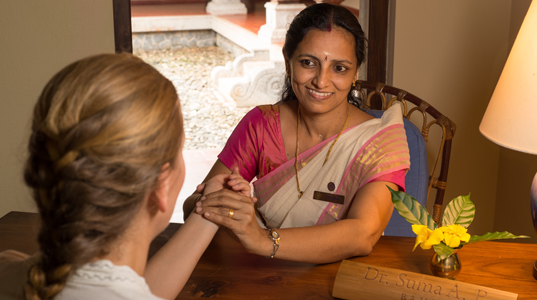The Healing Time
Global tourism is taking flight again. With the pandemic waning, there may be sorry tales of airport overcrowding as they struggle to deal with the surge of would-be travellers, but these only serve to confirm an abrupt rise in international air travel even if hard data on tourist movements are only now trickling in.
This extraordinary travel boom, propelled by over two years of Covid uncertainty, will likely continue for some time, according to experts in the field. So it would be only natural for Indian tourism to hope to ride this wave by coining a new slogan or two, or re-packaging a handful of tried and trusted destinations for a travel-hungry global audience. After all, the tourist ministry’s last memorable tagline was the highly successful ‘Incredible India’, but that was way back in 2002.
And it seems that the Government of India has indeed picked a niche: it is now focusing more on ‘medical tourism’, a segment of the market valued at $60-80 billion globally. This figure is based on an estimate of about 14 million medical tourists who travel every year, according to a strategy paper published by India’s tourism ministry in January. The size and scale of ‘wellness tourism’ is even larger — about $639 billion, according to estimates of Global Wellness Institute in 2017 as quoted in the same paper.
With this backdrop, a number of strategic moves are emerging. Firstly, the Government has been streamlining the procedures of Medical Value Travel (MVT), a segment that attracted 0.7 million foreign tourists in pre-pandemic 2019. Secondly, it has been gearing up to formally launch a ‘Heal in India’ project, complete with its own logo to promote it globally. And thirdly, the new policy is also designed to widen the definition of ‘medical tourism’ in India to incorporate ‘wellness’ — thus incorporating healing arts such as yoga, Ayurveda and naturopathy into the new policy. This last makes good sense, given the growing worldwide demand for wellness and alternative cures. It is estimated that in the post-Covid scenario, with people generally more conscious of their health, the demand for wellness tourism will increase multi-fold.
These governmental initiatives come under the remit of its Ministry of AYUSH which was formed in 2014 with ‘a vision of reviving the profound knowledge of our ancient systems of medicine and ensuring the optimal development and propagation of the Ayush systems of healthcare’. AYUSH is an acronym for Ayurveda, Yoga, Unani, Siddha and Homeopathy which are the six systems of traditional healing widely practiced in India and some of the neighbouring Asian countries.
As regards the ‘Heal in India’ plan, the main problem currently facing the initiative is the number of internationally recognised Indian hospitals. To date, 36 hospitals are accredited by the Joint Commission International (JCI), which is considered the gold standard in global health care, providing the most skilled and experienced consultants as evaluators of rigorous international standards in healthcare quality and patient safety. Of these 36, less than half are in the cities most easily reached by international travellers – Delhi and Mumbai. Crucially, none of the country’s Ayurvedic hospitals figure on the list. India’s own accreditation process, the National Accreditation Board for Hospitals & Healthcare Providers (NABH) which has recognised 155 hospitals offering Ayurveda, homeopathy etc. is virtually unknown outside of the subcontinent.
At present, statistics on foreign tourist arrivals for medical purposes - 83,000 in 2020, down from 697,000 in pre-Covid 2019 - are culled from the number of medical visas issued. But the actual number visiting India for medical purposes will be much higher, as many Non-Resident Indians (NRIs) avail themselves of medical procedures when visiting their native place. All in all, six to seven foreign tourists out of every hundred make a trip to India for medical treatment, though India has challengers in this area in Singapore, Malaysia and Thailand.
One way and another this is all good news, but as usual here at Neeleshwar Hermitage we are way ahead of the game. For years now we have been offering visitors a beautiful, tranquil and nourishing space fronting the Arabian ocean that is a healing balm in itself. Healthy and locally sourced food, customised diets, discreet and attentive service are the backdrop to instruction in yoga and meditation, and ayurvedic lifestyle advice and treatments overseen by our in-house vaidya. The relaxed atmosphere pervades everything here, and there could be no better place to de-tox, recuperate and rejuvenate. We are easily accessible from the main medical centres of Delhi, Mumbai, Bangalore and Mangalore. So, whether your medical needs are preventative or post-operative, it’s time to visit The Hermitage.





